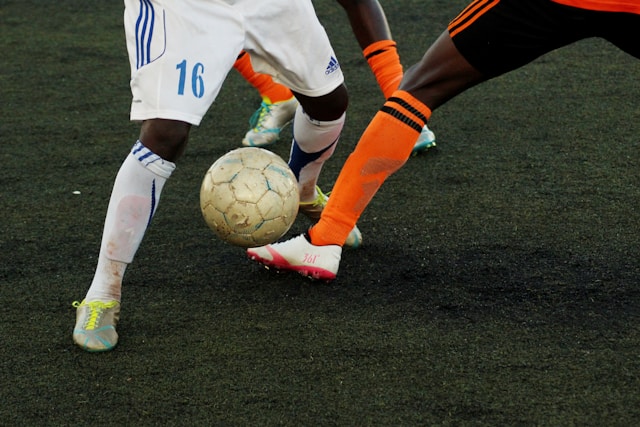Quick decision-making is vital for a successful pass in football matches. Many previous studies on decision-making in football focused on motor execution, but inhibitory processing remains unclear. This study aimed to clarify the differences in motor and inhibitory execution between Japanese university football players of varying skill levels. We evaluated behavioral data and event-related potentials in highly skilled, less skilled, and novice groups during Go/No-Go reaction tasks and choice-passing tasks.
Reaction time (RT) was significantly shorter in the high-skill group than in the novice group, and RT variability was lower in the high-skill group. The N2 component amplitude was significantly higher in the high-skill group than in the low-skill and novice groups, and the latency of the P3 component was significantly shorter in the high- and low-skill groups than in the novice group during the choice-passing task. The subtracted No-go N2 amplitude was also significantly higher in the high- and low-skill groups than in the novice group, and correlations were found between RT, RT variability, and subtracted No-go N2 amplitude during these tasks. These data suggest that football players´ decision-making activities, both behavioral responses and inhibition processing, are associated with skill levels.
Skilled players show stronger inhibition processes when choosing not to pass the ball.
To pass or not to pass—that is the question football players face worldwide in every match. It may not be surprising that higher-skilled players show better execution of actions than less-skilled ones, but now a research team led by Osaka Metropolitan University has evidence that the neural process of action suppression also plays a significant role.
Takahiro Matsutake, an assistant professor at the Research Center for Urban Health and Sports, and his colleagues conducted an experiment to observe how three levels of football players performed when faced with the same tasks.
Researchers recruited 14 university football players, half of them highly skilled, and seven graduate students with no formal football training. All 21 subjects were male. As part of the experiment, they were shown a series of photographs depicting different arrangements of two defenders and three offensive teammates from a first-person perspective. Participants had to press a button with their foot if a pass downfield between two defenders was possible.
Reaction times were significantly shorter in the high-skill group than in the novice group, and variability was lower in the high-skill group. Additionally, electroencephalographs revealed neural waveforms showing stronger inhibition processing, which restricts motor responses, in higher-skilled players.
“These research findings will advance our understanding of football players´ perception, cognition, and behavior,” said Professor Matsutake excitedly. “In the future, we will examine whether response inhibition training improves player performance and seek to establish effective training methods.”
The findings were published in Brain Sciences.
















